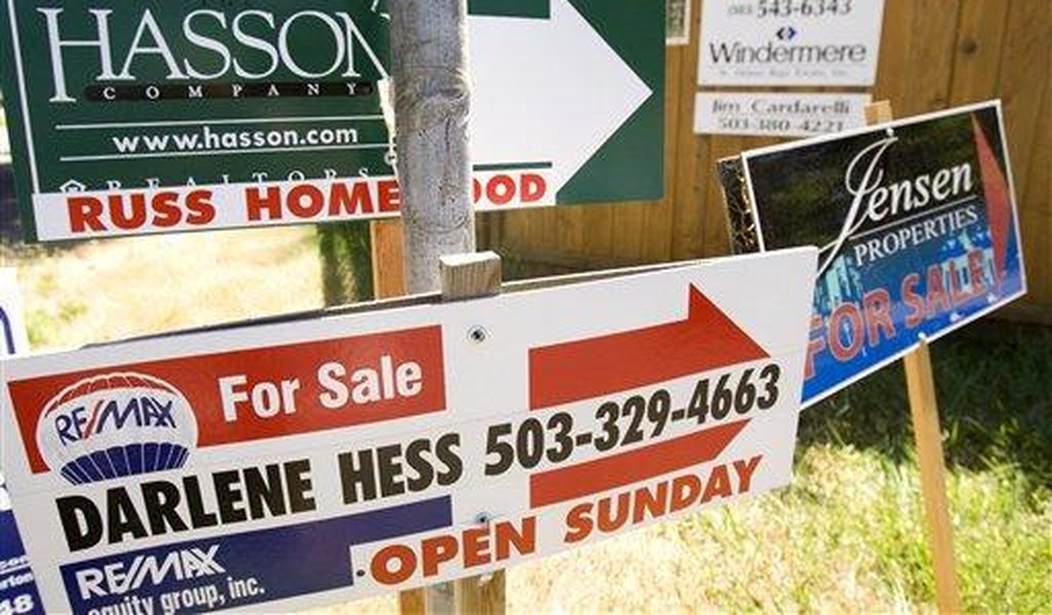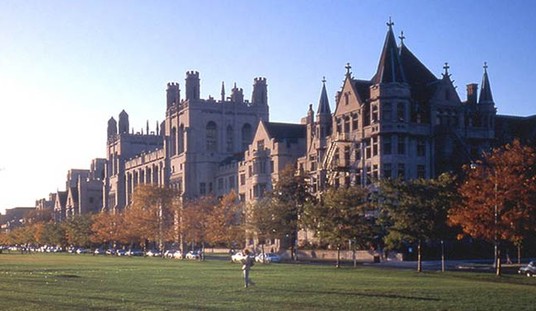If the economy can be likened to a game of musical chairs, it looks like the music is ending for the housing market — fast. Two big indicators today show that the Federal Reserve’s actions to tighten money supply as a brake on inflation has already had a big impact. Mortgage demand crashed to a 22-year low last week, leaving sellers potentially in a situation where prices may have to fall:
Mortgage demand fell more than 6% last week compared with the previous week, hitting the lowest level since 2000, according to the Mortgage Bankers Association’s seasonally adjusted index.
Applications for a mortgage to purchase a home dropped 7% for the week and were 19% lower than the same week in 2021. Buyers have been contending with high prices all year, but with rates almost double what they were in January, they’ve lost considerable purchasing power. …
The average contract interest rate for 30-year fixed-rate mortgages with conforming loan balances ($647,200 or less) increased to 5.82% from 5.74%, with points increasing to 0.65 from 0.59 (including the origination fee) for loans with a 20% down payment. That rate was 3.11% the same week one year ago.
That hasn’t just hit the home sales market, to which we’ll get in a moment. It’s hitting refinancing as well, with implications for secondary effects in related industries:
Demand for refinances, which are highly rate sensitive, fell 4% for the week and were 80% lower than the same week last year. Those applications are also at a 22-year low, but the drop in demand from homebuyers caused the refinance share of mortgage activity to increase to 31.4% of total applications from 30.8% the previous week.
That could have big impacts on the remodeling and DIY sectors of the economy. Most people no longer pull out equity for unrelated spending, a lesson many had to learn the hard way in the financial crisis of 2008, but they do use equity rationally to improve their homes. Properly done, such work adds value to the asset while giving homeowners better use of their property. If mortgage rates go back up to the rates of 22 years ago — and they’re getting there now — we can expect demand to drop precipitously for those projects, and with it a big hit to hardware stores, remodelers, landscapers, and so on.
The increased rates has also cooled demand for housing, especially in the resale market. That hit its slowest pace in two years, although it hasn’t impact prices — yet:
Sales of previously owned homes in June fell 5.4% from May, according to a monthly report from the National Association of Realtors, as prices set records and rates surged.
The sales count declined to a seasonally adjusted annualized rate of 5.12 million units last month, the group said. Sales were 14.2% lower compared with June 2021.
This is the slowest sales pace since the same month in 2020, when sales dropped very briefly at the start of the pandemic. Outside of that, it is the slowest pace since January 2019, and below the annual 2019 total, pre-pandemic.
These numbers are based on home closings, so the contracts were likely signed in April and May, before the average rate on the 30-year fixed mortgage shot above 6% and as inflation was surging toward rates not seen since the early 1980s.
The saving grace for sellers is that there’s still more demand than supply, at least for the moment. But that’s only concentrated at the upper end of the market:
The still-tight supply, however, is keeping the heat under home prices. The median price of an existing home sold in June set yet another record at $416,000, an increase of 13.4% year over year.
Activity continues to be stronger on the higher end of the market, where there is more supply. Sales of homes priced between $100,000 and $250,000, for example, were 31% lower annually, while sales of homes priced between $750,000 and $1 million increased by 6%. Sales of homes priced over $1 million rose 2%. The upper end appears to be weakening, as annual comparisons in recent months were much higher.
That’s not great news for first-time buyers, who usually don’t have a lot of starter capital for down payments. With inflation hammering savers and worrying those getting closer to living on fixed incomes, The Hill reports that the “banks of mom and dad” aren’t doing much business these days:
The market is especially challenging for the first-time homebuyer, whose initial issue is often coming up with the capital for a down payment, Robert Dietz, chief economist for the National Association of Home Builders (NAHB) told Changing America.
“First, they have to consider what their abilities are to accumulate a down payment – through their own savings, if they lack access to what is often called the ‘bank of mom and dad,’” Dietz said. “Those are key challenges to be even able to essentially qualify for a mortgage and be able to purchase a home.”
Polling from May shows that 79 percent of homebuyers between the ages of 18 and 29 had help from their parents when purchasing their first home. One in 10 homeowners across all age groups said their parents purchased the property for them outright.
“Then there’s the question — and it varies somewhat by geography — but the question of whether you can find available inventory, whether that’s new or an existing home, particularly single-family entry level type construction, so a smaller home that’s appropriate for a younger homebuyer,” Dietz said.
The supply remains behind the demand for now, but as rates rise the demand will change too. That’s precisely what the Fed wants to accomplish, in fact, as the only means left to cool inflation down to its 2% target range. If the Biden administration would change its energy policies to produce and refine more gasoline and diesel, the Fed might not need to intervene as aggressively.
As it is, though, we can expect the Fed to keep up with repeated and large interventions of 75 to 100 basis points over the next few months, which should well and truly kill the housing market for everyone except cash buyers. The younger consumers will get hit hardest, which won’t make them any happier with Biden, Democrats, or the Fed.








Join the conversation as a VIP Member